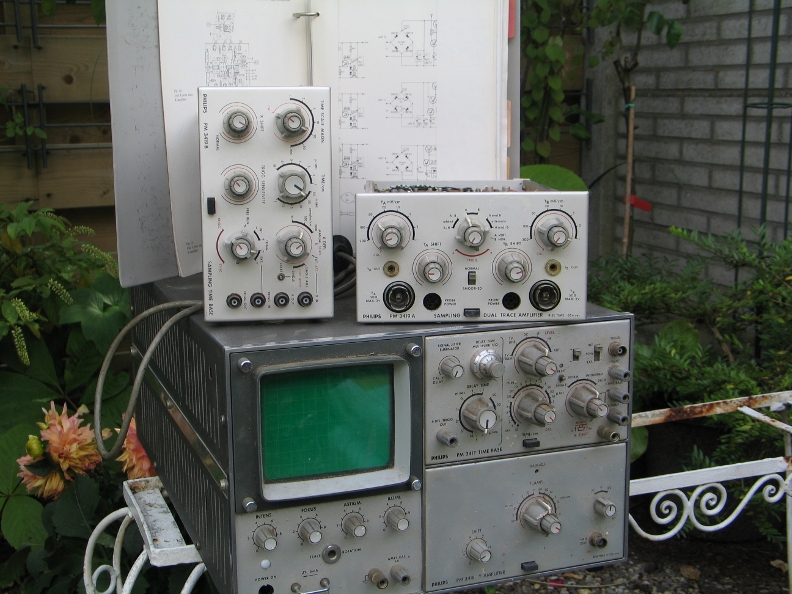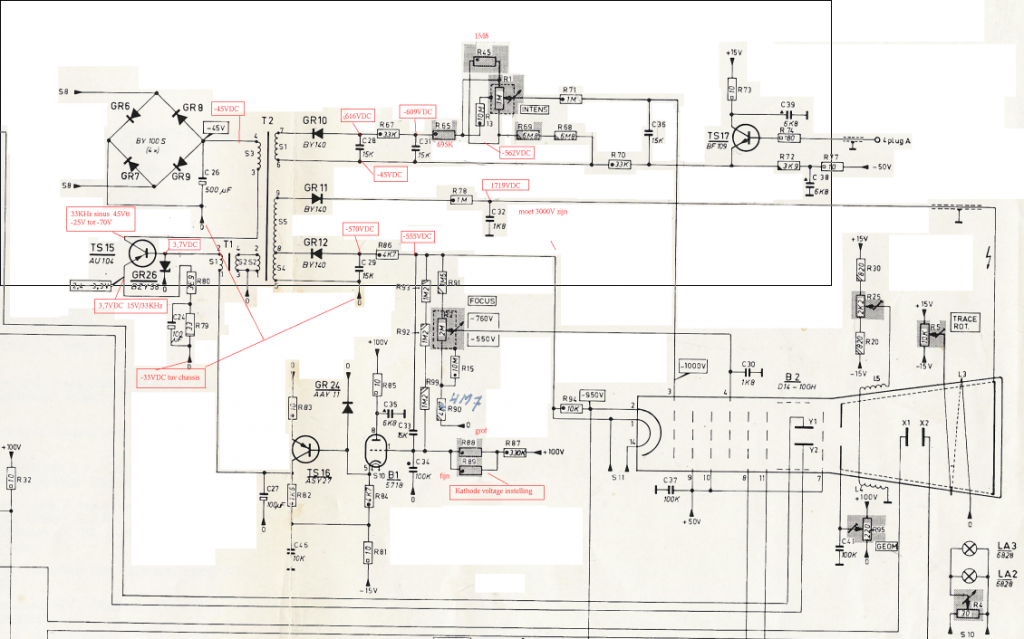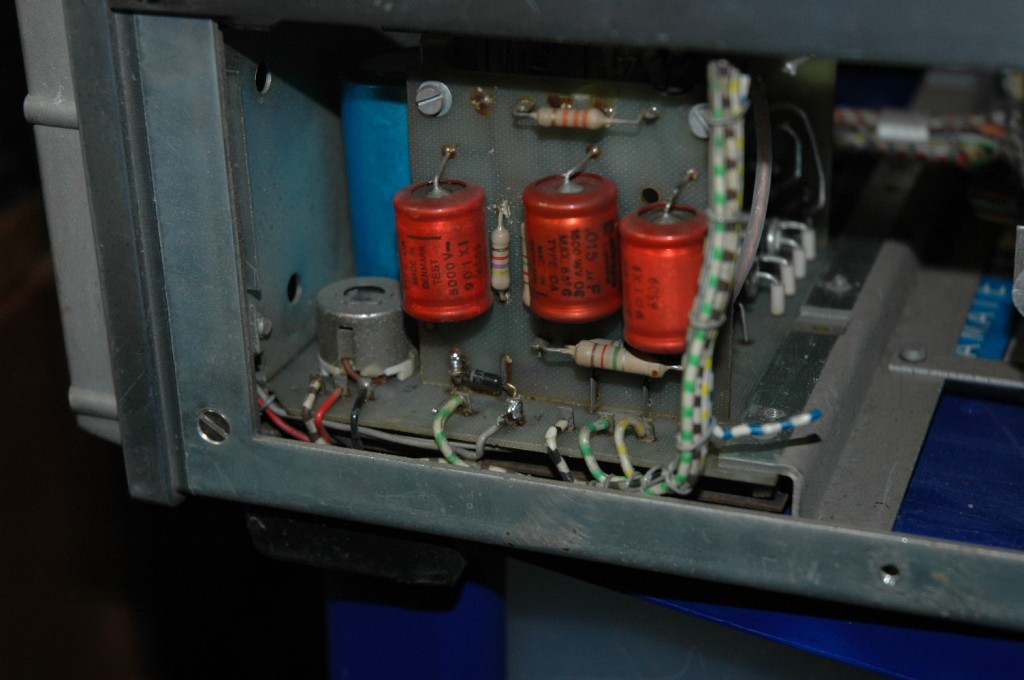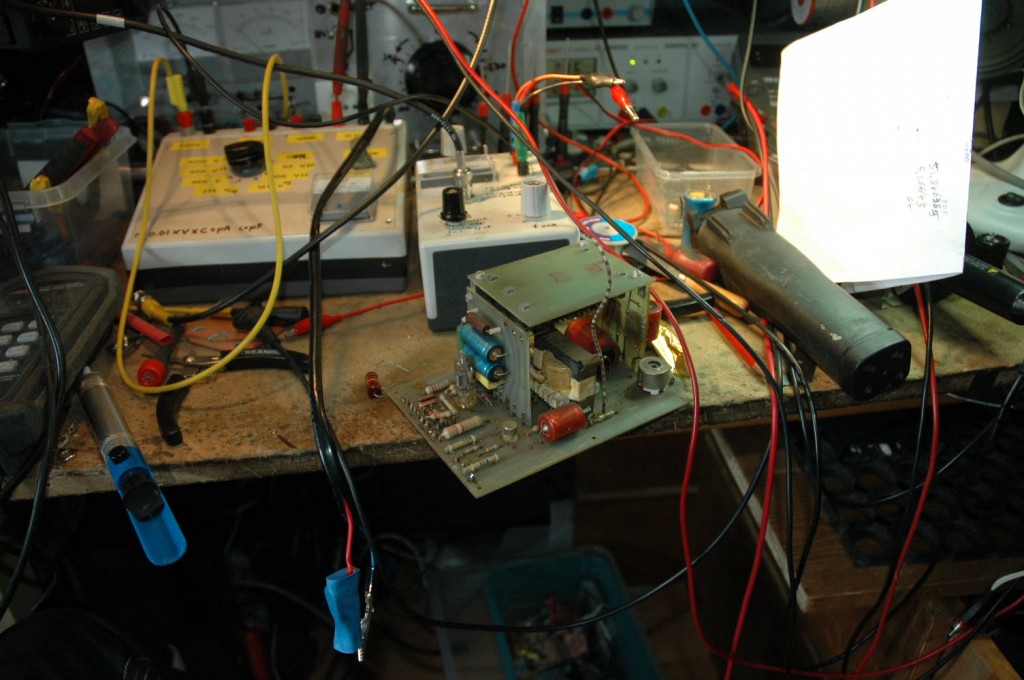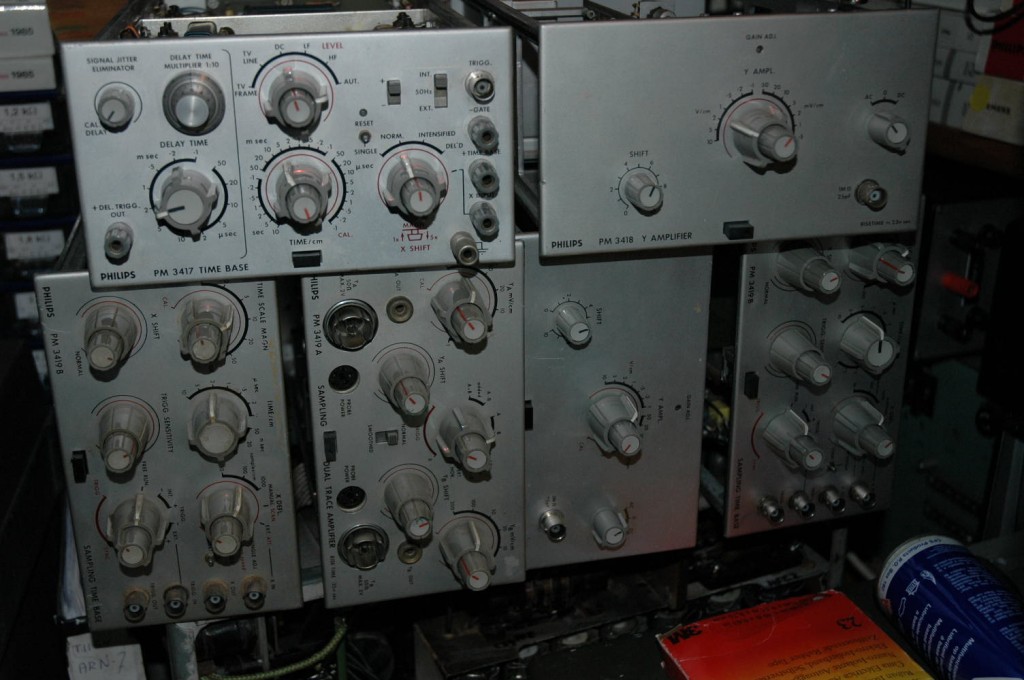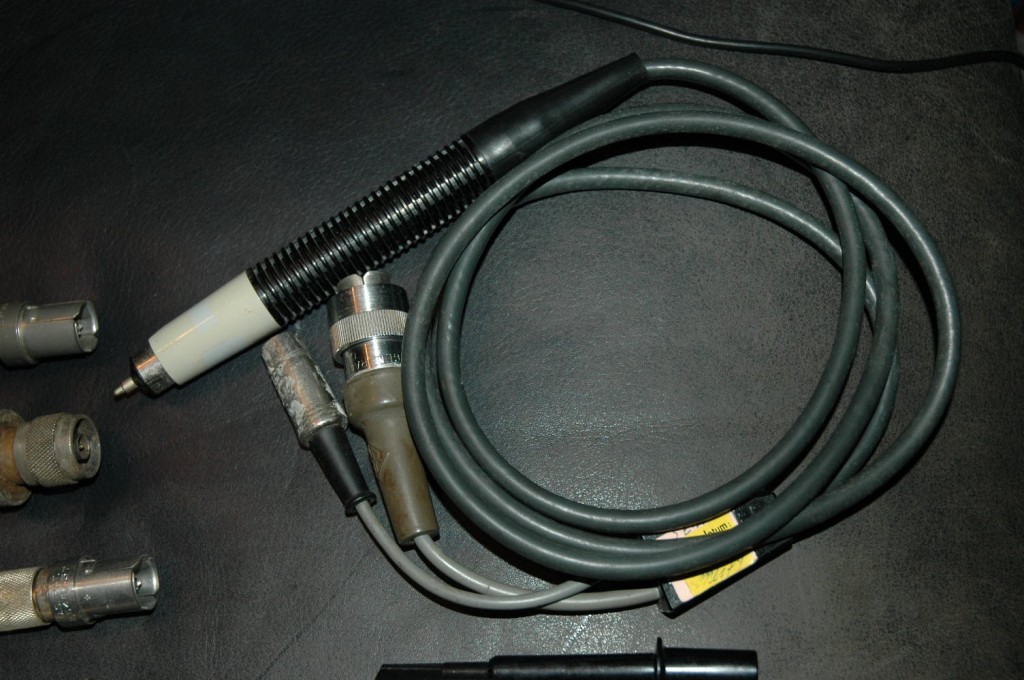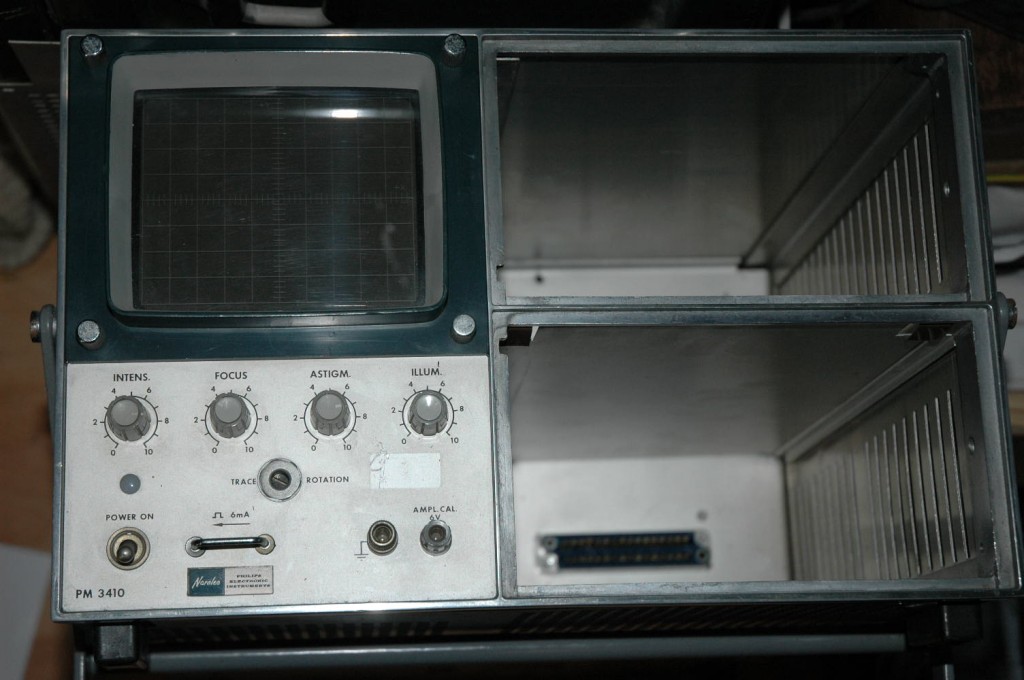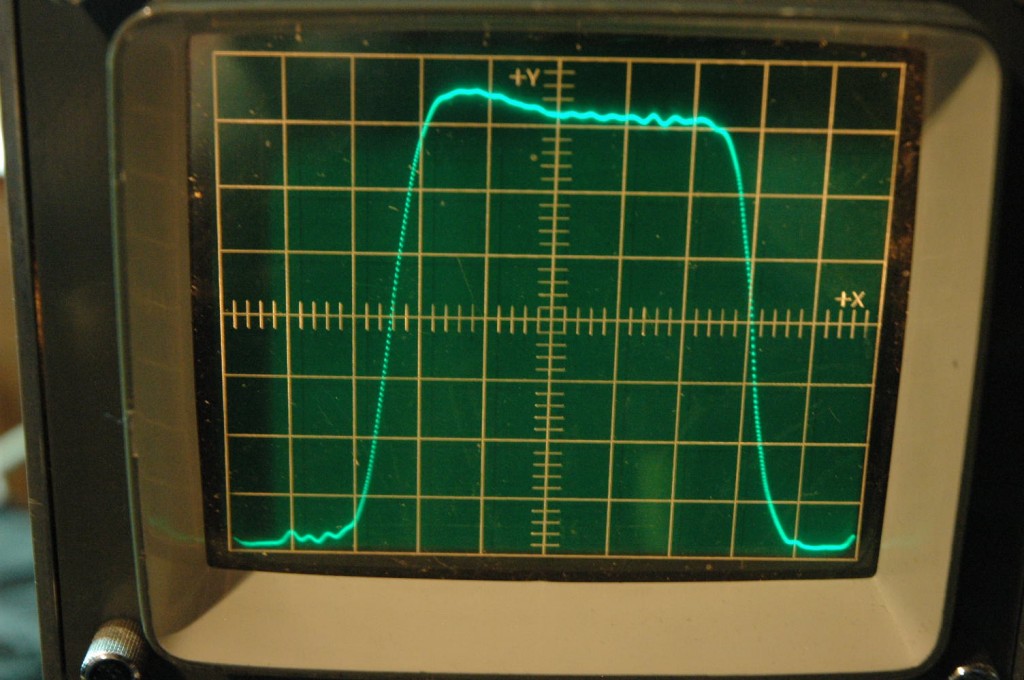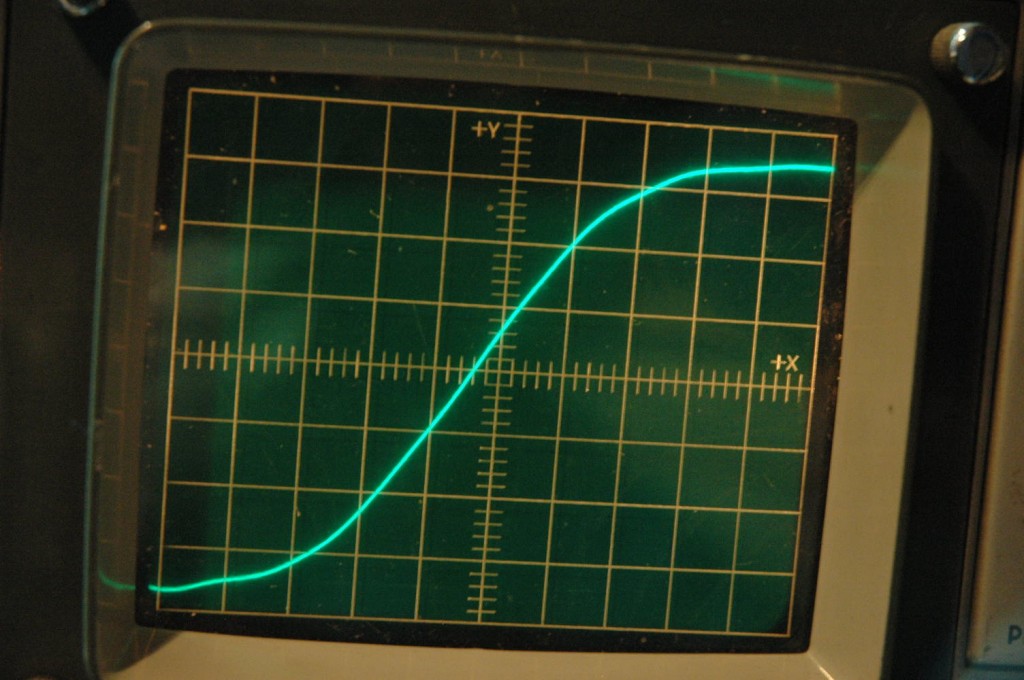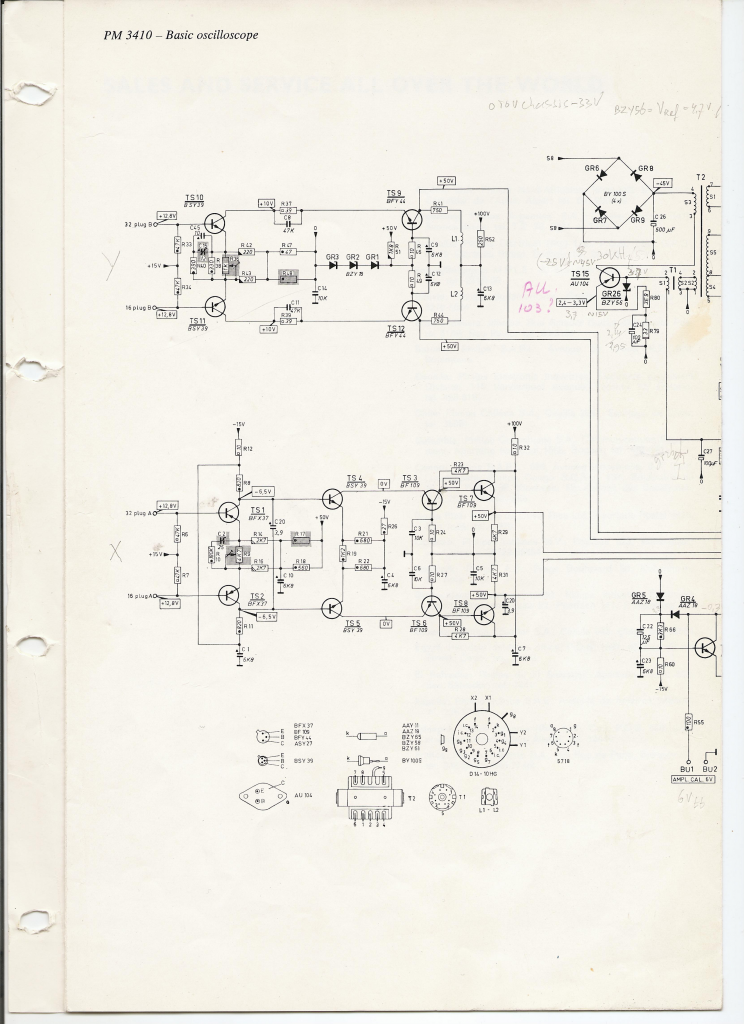This is a Philips mainframe scope. A big box that houses the CRT, vertical and horizontal amp and the power supply. It is made in 1968. It contains a few pencil-tubes and a few nuvistors in the plugins, but the rest is germanium. The two bays in the front are for plugins. A very common thing in the sixties. I have a 20 MHz timebase plugin and a sensitive vertical plugin that goes down to 500uV/div. But the interesting stuff is the 1 GHz sample plugin set. And to top it off, including the active, tube powered, probes and some schematics. The documentation is not complete, most is from other gear.
The scope was used by the PTT, (the former Dutch Post, Telephone and Telegraph company) .
The biggest problem was the high voltage. Just a tip if you have original schematics. Scan a part, enlarge it and print it. Sometimes I clean it up a bit. Then print it and use it, you can write on it and print a new one whenever you want.
I removed al parts from the EHT and tested the caps separate for the usual things like C, DF, and DC leakage. Resistors for resistance (duh) and the semiconductors on a curvetracer. Pencil tubes on a tubetester. The high voltage was to low because all the HV “doorknob” capacitors turned out to be leaking. Some as much as 500 uA at 500V.
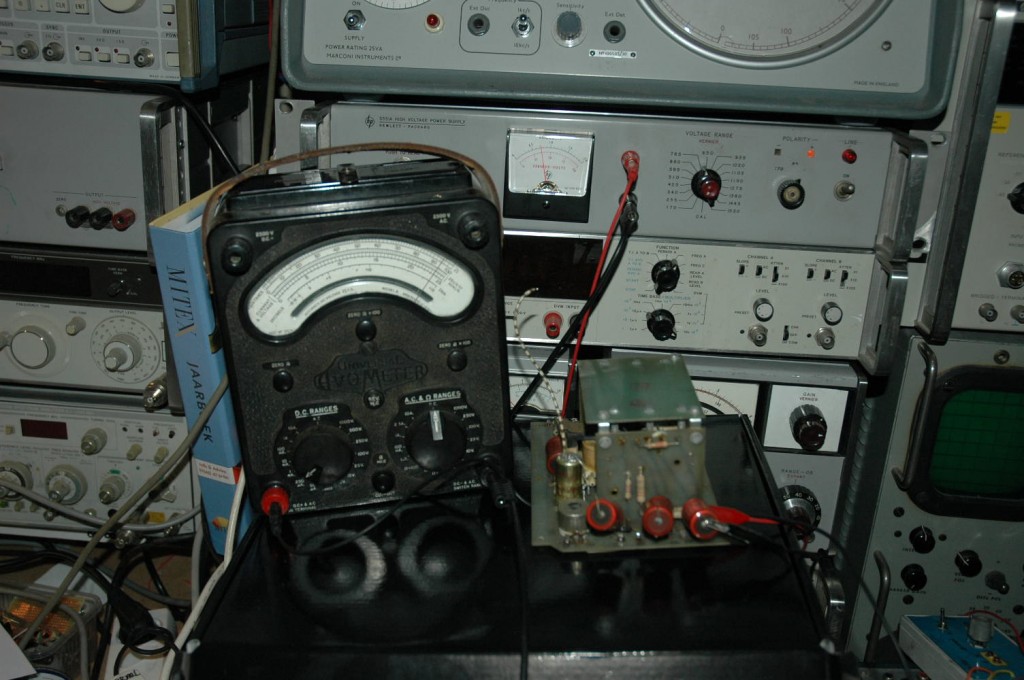
Testing DC leakage with an old AVO8 and a HP HV powersupply that was made for powering a photomultiplier
After replacing the low voltage caps the tube had a good intensity. That is, for a short time, after that the trace got dim and the transformer very hot. It pulled more as 800 mA primair, 3 times what it should be. That is why I measured the doorknobs. I used a 6 mA 0-2000V HP photomultiplier powersupply and an AVO 8 to measure the current.
I found a dead zener diode and the oscillator transistor of the EHT had lost a lot of it’s power. After that and the alignment all is well again.
But then there are the plugins.
6 plugins, 2 are OK, 4 are dead. I aligned the good ones. The most important set was good (the 1 GHz set)
Someone gave me a second mainframe. Also dead, same problem in the HV. . The front has an other color
And to conclude, a picture from the scope in action. It is a sample scope. It measures only repetitive signals. I the lowest sample rate you see a trace made of separate dots. But with a higher sample rate and smoothing you see a trace like on the picture.
They can not measure low frequenties very well, (under 15 MHz)
______________________
The thing is loaded with germanium. These Germanium things have three modes, next to good or bad there is a sort of twilight zone where they are real “semi”conductors. They kinda work but the relation base-current and collector current is gone. hFE on a transistor tester is OK, but hfe is gone, you can increase the base current but the collector current stays low and does not increase. Besides that they can leak a lot.
Manuals:
PM3417 – circuit diagram
PM3418 – service manual
PM3417 PM3418 – operating manual
PM3419A PM3419B – operating manual
PM3419A – service manual
PM3419B – service manual

